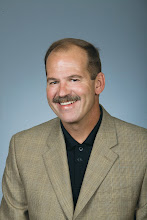
Many marketing pundits and bloggers have written obituaries for printed newspapers and magazines the past few years, but too few have stopped to think about the value of good old-fashioned dead-tree-and-ink communications.
Fortunately, our pal Joe Pulizzi stepped in to do exactly that in the latest Folio magazine. Here's the entire article (http://www.foliomag.com/2010/seven-reasons-print-will-make-comeback-2011) but let me summarize Joe's key points:
1. People are actually starting to pay attention to print things they receive in the mail. In a world where our banking, our communications with family and friends and our access to news is largely digital, that beautiful printed magazine in your mailbox is....different. And different is good when you're trying to get noticed.
2. Magazines like ours still do the best job of identifying and capturing data about customers. It's EXPENSIVE -- as you might know -- to track down and get information about customers. We do it for you and, when you advertise, you take advantage of that work.
3. Print still excites people. Let me ask you this question: If a reporter called you and wanted to interview you for a story, would you be more interested and more proud to be a source if it was in the printed publication vs. an online source. Print has gravitas.
There's one final reason that print MUST be a part of a good marketing mix that Joe doesn't mention: the concept of BIGNESS. A print presence in GCI or other good industry magazines reinforces the strength of your brand or, if you're still a growth company, puts you shoulder to shoulder with established brands.
Superintendents consistently say that the main thing they value from print advertisements is a sense that the advertiser is a sound, stable company that supports their profession. Isn't that pretty much the baseline message you want to send to all of your customers?









